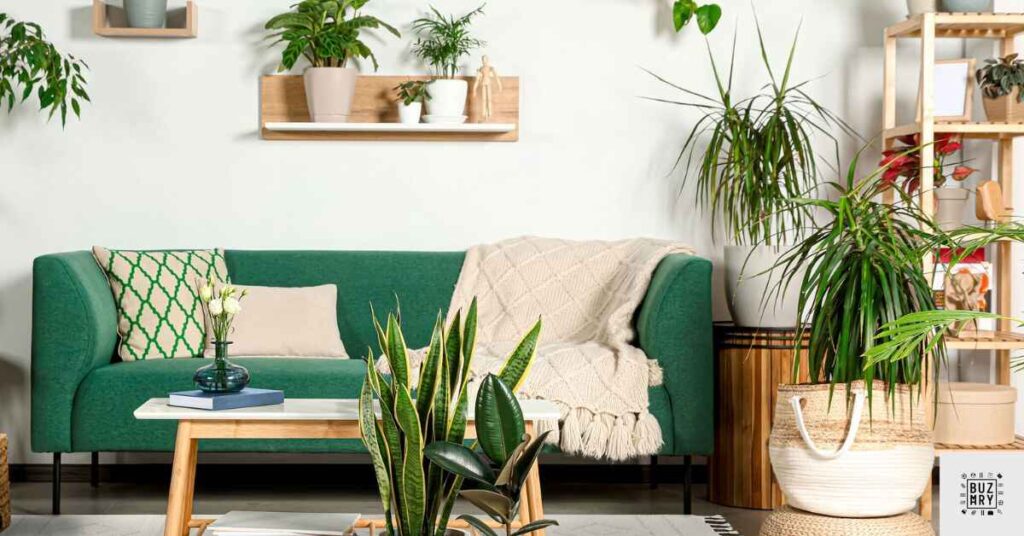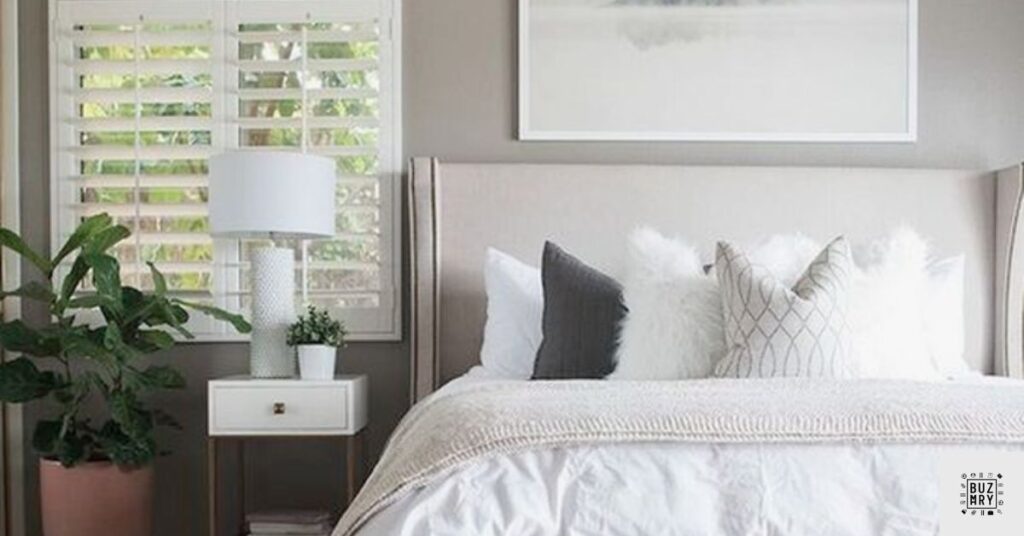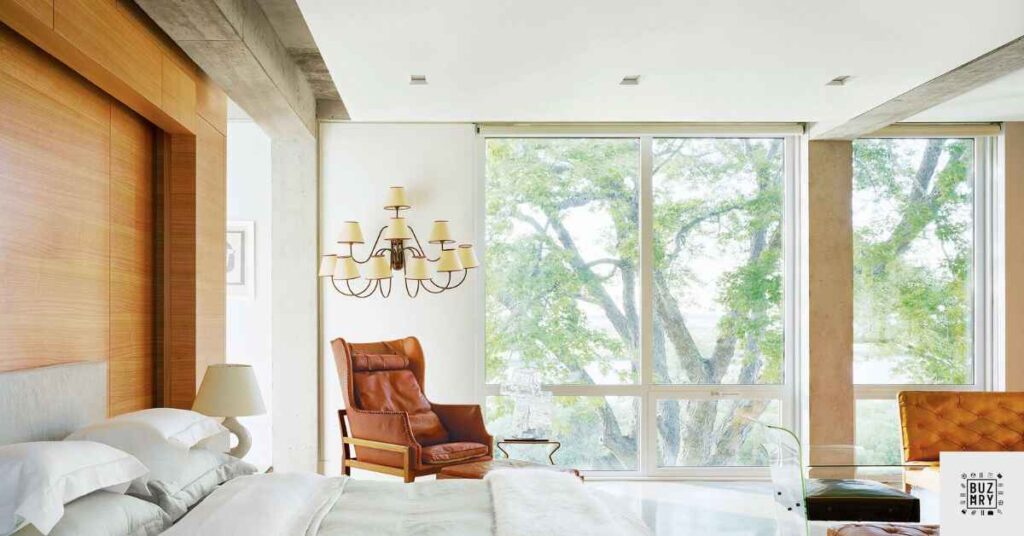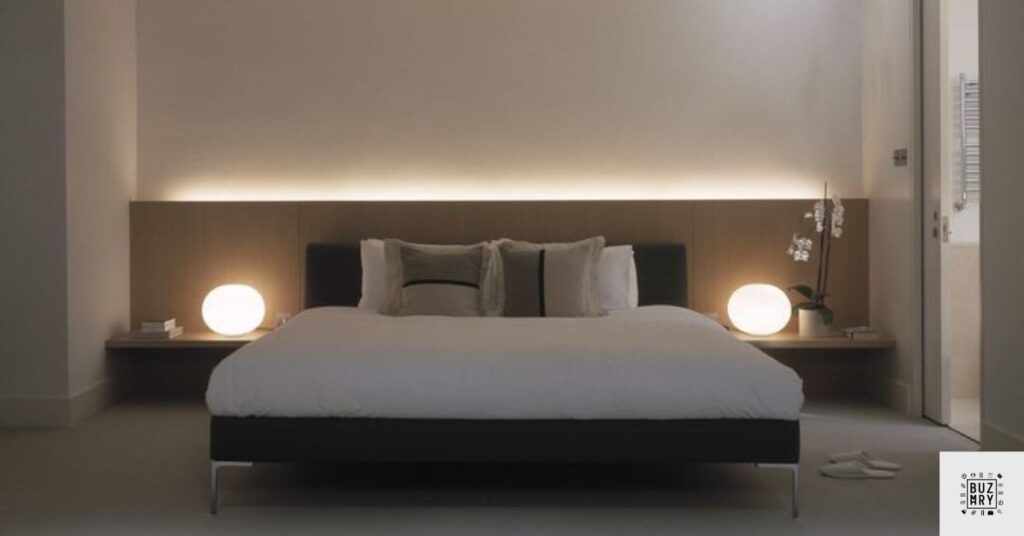The Japandi bedroom style is a mix of Japanese practicality and Scandinavian comfort and is very calming and beautiful. This fusion came out during a time when people wanted simplicity in their otherwise busy and stressful lives.
Tight schedules accompanied by large amounts of information make nights sleepless and mornings stressful. Often the traditional concepts of the bedroom interiors are messy or lack the relaxed atmosphere necessary for grounding. Japandi style presents a solution as it features minimalist designs, the use of wood and earthy colors.
It centres a calm environment that allows one to have a good sleep at night and wake up to a good morning. When you decide to adopt some Japandi ideas in your room, it becomes a comfortable and minimalist bedroom that leads to the improvement of the quality of sleep and well-being.
What is Japandi Style?
Japandi is a newer style in furniture and interior design concept that mixture between Japanese and Scandianavian style. That is where they have merged Japanese sophistication with a Scandivanish feel of comfort. There are three main characteristics Рthe sleek and minimalist look and design of furniture, the liberal use of natural elements in furniture and accessories and the predominance of soft, neutral colours in d̩cor.
I have noticed that Japandi spaces are decluttered and calm. Those insiders are concerned with form and essence as well. This style gives the creation of the calm and balanced environment, which is at the same time warm and rather chic.
Japandi Styling pop up in bedrooms.

Japandi style produces beautiful bedrooms that include quality rest and can be used as a workplace as well. It helps to minimizes the clutter of visual information thus helps in getting a good night sleep. Natural materials enhance the quality of air and facilitate people’s link with the ecosystem.
The use of stock keeps unnecessary stress and clutter within the workplace at a minimum. This makes use of soft materials in order to avoid further addition of hardness in the interior. Soft or plain colors such as blue, green or grey bore the mind. Soft Japandi bedrooms become a sanctuary for longest and busiest lives.
Embracing a Neutral Color Palette

Neutral colors are essential in Japandi design. They create a calm, harmonious atmosphere. Common colors include beige, gray, white, and soft earth tones. These hues work well together and with natural materials. Suggested combinations:
Warm beige with soft gray
Off-white with pale wood tones
Light gray with cream accents
Incorporating Natural Materials

Japandi bedrooms use various natural materials. Common choices include:
Wood: For furniture, flooring, and accents
Stone: In decor or as accent walls
Bamboo: For blinds or decorative items
Cotton and linen: For bedding and curtains
Balance textures by mixing smooth and rough surfaces. This adds depth without clutter.
Choosing Minimalist Furniture

Japandi furniture is simple and functional. It has clean lines and minimal ornamentation. Choose pieces with:
Low profiles
Natural wood finishes
Simple, geometric shapes
Arrange furniture sparsely. Leave open space for a sense of calm. Focus on quality over quantity. Select a few well-made pieces rather than many small items.
Emphasizing Simple and Clean Lines

Clean lines create a sense of order in Japandi bedrooms. They make spaces feel larger and more peaceful. To achieve this:
Choose furniture with straight edges
Avoid ornate decorations
Keep surfaces clear of clutter
Use simple window treatments
This approach creates a calm, organized environment that promotes relaxation.
Incorporating Greenery for Natural Vibrancy

Plants add life to Japandi bedrooms. Good choices include snake plants, bamboo, and bonsai trees. These are low-maintenance and suit the style. Display plants in ceramic pots or woven baskets. Place them on windowsills or shelves. Hanging planters work well too. Use plants sparingly to maintain the minimalist look. One or two statement plants can make a big impact.
Soft Textiles and Layering Techniques

Choose natural fabrics like linen, cotton, and wool for Japandi bedrooms. Stick to neutral colors and simple patterns. Layer textures for depth and comfort. Start with crisp sheets, add a soft duvet, then top with a textured throw. Use a mix of smooth and rough textures in pillows. Keep the overall look simple but cozy. This creates a inviting bed without clutter.
Lighting for Ambiance in Japandi Bedrooms
Japandi lighting is soft and warm. Use paper lanterns or simple pendant lights. Wall sconces with warm bulbs work well too. Avoid bright overhead lights. Instead, use multiple light sources at different heights. This creates a cozy atmosphere. Consider dimmable lights to adjust the mood. Natural light is important too, so keep windows uncluttered.
Designing a Zen Corner for Relaxation
Create a Zen corner for quiet moments. Include a low cushion or floor chair. Add a small side table for tea. Use a natural rug or mat for comfort. Keep the area clutter-free. Add a few meaningful objects like a plant or a small sculpture. This space should feel separate from the rest of the room. It’s a personal retreat for meditation or reading.
Selecting Artwork and Wall Decor
Choose simple, nature-inspired art for Japandi bedrooms. Black and white prints or minimalist landscapes work well. Avoid busy or colorful pieces. Hang art at eye level. Use one large piece or a small group of similar items. Leave plenty of empty wall space. This creates a calm, focused look. Consider textural wall hangings like woven tapestries for added interest.
Incorporating Tatami Mats for Authenticity
Tatami mats add Japanese flair to Japandi bedrooms. They’re natural, comfortable, and smell nice. Use them as area rugs or floor seating. Modern designs incorporate tatami into raised platforms for beds. This adds levels to the room. Tatami can also create a meditation area. Their natural color fits well with the Japandi palette.
Maximizing Open Space and Airiness
Create open space in Japandi bedrooms. Use fewer, larger pieces of furniture instead of many small items. Keep floors clear. Use wall-mounted shelves and nightstands. Choose a low bed frame to make the ceiling feel higher. Arrange furniture to allow easy movement. This creates a sense of flow and calm in the room.
Read This Blog: Top 10 Contemporary Bathroom Styles & Designs
Using Shoji Screens for Flexibility
Shoji screens add Japanese elegance to bedrooms. They filter light softly. Use them as room dividers or closet doors. They can hide storage areas neatly. Shoji screens also work as headboards. Their simple design fits Japandi style perfectly. They add texture without overwhelming the space. Shoji screens make rooms feel larger and more peaceful.
Harnessing Natural Light and Views

Maximize natural light in Japandi bedrooms. Use sheer curtains to let in light while maintaining privacy. Keep windows uncluttered. Place mirrors to reflect light and views. If possible, arrange the bed to face a nice view. This connects the room to nature. Natural light enhances the calm feel of Japandi design.
Integrating Wabi-Sabi Elements
Wabi-sabi celebrates imperfect beauty. In Japandi bedrooms, use items with natural wear. Choose handmade ceramics or weathered wood. Embrace asymmetry in decor. Display a single branch in a vase. Use textiles with subtle variations. These elements add character and depth. They make the space feel lived-in and authentic.
Personalizing Your Japandi Bedroom
Add personal touches to Japandi bedrooms carefully. Display a few meaningful items. Use a family photo in a simple frame. Add a handmade item that’s special to you. Choose decor that fits the neutral color scheme. Personal items should blend with the overall style. This creates a space that’s both stylish and uniquely yours.
Storage Solutions in Japandi Design
Japandi bedrooms need smart storage to stay clutter-free. Use built-in closets with sliding doors. Choose furniture with hidden compartments. Under-bed storage boxes work well. Wall-mounted shelves keep floors clear. Use baskets made of natural materials for small items. Keep most storage closed to maintain a clean look. Open shelves should display only a few carefully chosen items. This keeps the room feeling open and calm.
Maintaining a Japandi Bedroom
Caring for a Japandi bedroom is simple. Dust wooden furniture regularly with a soft cloth. Vacuum tatami mats gently. Wash natural fabric bedding in cool water. Air out the room daily to keep it fresh. Clean windows often to maximize natural light. Reorganize and declutter weekly. This maintains the serene atmosphere. Regular care keeps natural materials looking their best.
Also Read This Blog: The Dimension Of Toilet Tissue Roll
Seasonal Adjustments for Japandi Bedrooms
Adapt your Japandi bedroom for each season. In summer, use lighter bedding and airy curtains. For winter, add warm throws and cozy rugs. Change artwork to reflect the season. Use seasonal plants or branches. Keep changes subtle to maintain the Japandi feel. Swap out a few accessories rather than changing everything. This keeps the room fresh while respecting Japandi principles.
DIY Japandi Bedroom Projects
Create Japandi-style decor on a budget. Make a wooden headboard with clean lines. Paint old furniturein neutral colors. Craft simple wall art using natural materials. Create textile wall hangings with minimalist designs. Build floating shelves for display. These projects add personal touches while saving money. They also help achieve the Japandi look without buying new items.
Thrifting and Upcycling for Japandi Bedrooms
Find Japandi-style pieces at thrift stores. Look for simple wooden furniture. Choose items with clean lines and neutral colors. Upcycle existing furniture by sanding and repainting. Remove ornate details for a cleaner look. Replace hardware with minimalist options. Transform old textiles into simple pillow covers. These methods create a Japandi bedroom affordably and sustainably.
Small Space Japandi Bedroom Makeover
Transform a small bedroom into a Japandi oasis. Use a low platform bed to create space. Choose multi-functional furniture like a desk that becomes a nightstand. Use light colors to make the room feel bigger. Install wall-mounted lighting to free up surface space. Add a large mirror to create depth. Keep decor minimal. This makeover shows how Japandi style can make small spaces feel open and calm.
Luxury Japandi Master Bedroom Design
Create a high-end Japandi bedroom with quality materials. Use custom-built storage for a seamless look. Choose a statement bed with fine linens. Add a few luxury touches like a cashmere throw. Use high-quality natural stone elements. Install custom lighting for perfect ambiance. Keep the overall design simple and uncluttered. This approach combines luxury with Japandi minimalism for a sophisticated result.
Frequently Asked Question
What are the key elements of Japandi bedroom styling?
Key elements include neutral colors, natural materials, minimalist furniture, and clean lines. Emphasis on simplicity, functionality, and a balance of Japanese and Scandinavian design principles.
How can I blend Japanese and Scandinavian styles effectively?
Combine Japanese minimalism with Scandinavian coziness. Use natural materials, incorporate both light woods and darker accents, and balance simplicity with comfort.
Is Japandi bedroom styling suitable for all home types?
Japandi style is versatile and can adapt to various home types. It works well in both modern and traditional settings, as long as simplicity and natural elements are emphasized.
How can I transition my current bedroom to Japandi style?
Start by decluttering and choosing a neutral color palette. Gradually replace furniture with minimalist pieces and incorporate natural materials and textures.
Conclusion
There are various advantages that you can get when you welcome the Japandi bedroom lifestyle in your home. Combining the Japanese and the Scandinavian concepts of design puts a lot of importance on the bedroom space and emphasises on creating a space that is as relaxing as possible for a good night sleep.
Also, using natural materials, avoiding bright colors, and keeping the design as simple as possible you achieve the creation of a stress-free zone in your home. This can be seen as a drawback if one wants a more minimalist approach but generally, it is nice to have ones bedroom look unique to one’s personality.
Introduce several accessories that you find fulfilling and fit into Japandi style into your interior design. Just think that the goal is to establish a restful atmosphere for a classy yet cozy area of your house most suitable to your personality and requirements.







